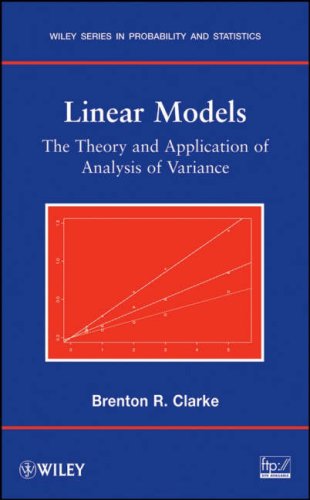

Most ebook files are in PDF format, so you can easily read them using various software such as Foxit Reader or directly on the Google Chrome browser.
Some ebook files are released by publishers in other formats such as .awz, .mobi, .epub, .fb2, etc. You may need to install specific software to read these formats on mobile/PC, such as Calibre.
Please read the tutorial at this link. https://ebooknice.com/page/post?id=faq
We offer FREE conversion to the popular formats you request; however, this may take some time. Therefore, right after payment, please email us, and we will try to provide the service as quickly as possible.
For some exceptional file formats or broken links (if any), please refrain from opening any disputes. Instead, email us first, and we will try to assist within a maximum of 6 hours.
EbookNice Team

Status:
Available5.0
29 reviewsLinear Models explores the theory of linear models and the dynamic relationships that these models have with Analysis of Variance (ANOVA), experimental design, and random and mixed-model effects. This one-of-a-kind book emphasizes an approach that clearly explains the distribution theory of linear models and experimental design starting from basic mathematical concepts in linear algebra.
The author begins with a presentation of the classic fixed-effects linear model and goes on to illustrate eight common linear models, along with the value of their use in statistics. From this foundation, subsequent chapters introduce concepts pertaining to the linear model, starting with vector space theory and the theory of least-squares estimation. An outline of the Helmert matrix is also presented, along with a thorough explanation of how the ANOVA is created in both typical two-way and higher layout designs, ultimately revealing the distribution theory. Other important topics covered include:
Vector space theory
The theory of least squares estimation
Gauss-Markov theorem
Kronecker products
Diagnostic and robust methods for linear models
Likelihood approaches to estimation
A discussion of Bayesian theory is also included for purposes of comparison and contrast, and numerous illustrative exercises assist the reader with uncovering the nature of the models, using both classic and new data sets. Requiring only a working knowledge of basic probability and statistical inference, Linear Models is a valuable book for courses on linear models at the upper-undergraduate and graduate levels. It is also an excellent reference for practitioners who use linear models to conduct research in the fields of econometrics, psychology, sociology, biology, and agriculture.